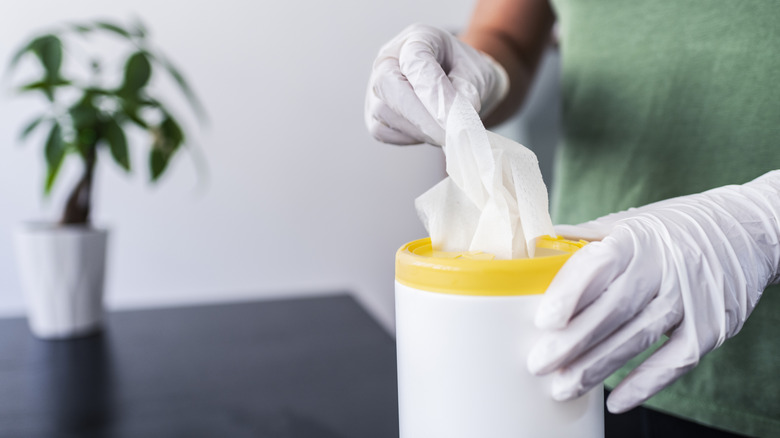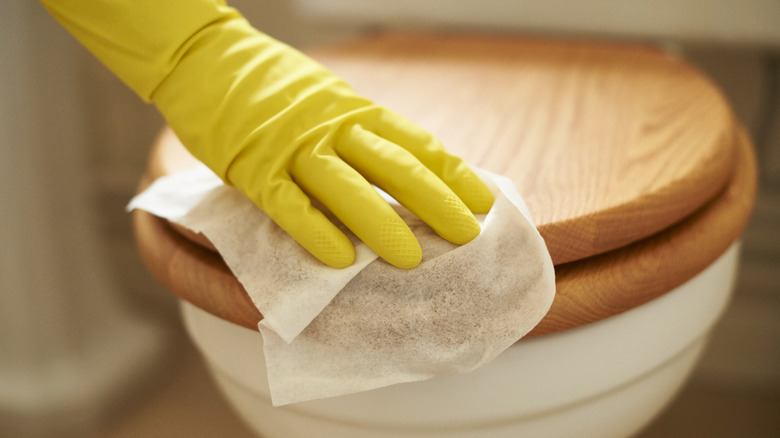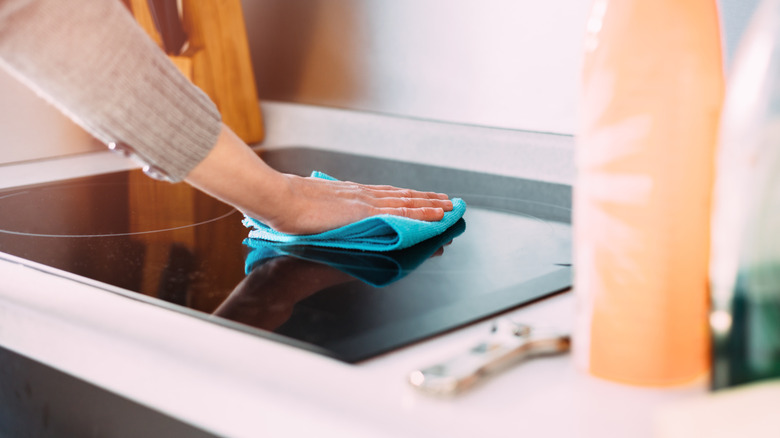Why You Might Want To Ditch The Disinfecting Wipes (And What You Should Use Instead)
Disinfecting wipes are everywhere — from your kitchen counter to your car's glove box. They're convenient, easy to use, and feel like the quickest way to keep your home clean. For busy households, they can be a lifesaver. But while they may seem like a harmless shortcut, these wipes come with more risks and downsides to your health than you might think. If you've got kids crawling around or pets licking every surface in sight, it's time to look a little closer at what's actually in those wipes.
Many popular brands use strong chemical disinfectants that can linger long after you've wiped something down. Sure, they kill bacteria, but they can also leave behind residue that's not ideal for little hands or paws. Improper use (like not letting surfaces fully dry) reduces effectiveness and raises exposure risk. And because they're single-use, they're not great for the planet, either. That doesn't mean you need to toss them immediately, but it's worth rethinking how and when you use them, especially for high-touch areas like the kitchen counter, kids' toys, and pet bowls where residue can build up quickly and transfer to skin, mouths, or food. Further, there are household items that should stay away from disinfectant wipes.
Disinfectant wipes will damage porous surfaces and can cause health issues
You may already know not to use disinfecting wipes on your body, but Clorox wipes and furniture also don't mix. The list of surfaces that can be damaged by them is surprisingly long and includes wood furniture and natural stone. From touchscreen devices to some bathroom fixtures, these wipes can break down protective finishes, leave streaks, or dull the surface over time. The high alcohol content or bleach in certain wipes can even strip paint or sealant if used repeatedly.
But beyond surface damage, they can also cause health issues — especially if you or someone in your household has allergies, asthma, or other sensitivities. The chemical ingredients that make these wipes effective at killing germs can also irritate the skin, eyes, or lungs. Many contain quaternary ammonium compounds (quats), which can trigger allergic reactions or worsen respiratory symptoms. If you're using them frequently in small spaces or without ventilation, you're increasing your exposure without realizing it. Plus, people often use these wipes on items they shouldn't, such as dishes, pet bowls, cutting boards, or toys. Even if you rinse afterward, that chemical residue can stick around. It's easy to assume "disinfected" means "safe," but in many cases, you're actually introducing new health risks.
Swap disinfectant wipes for unscented castile soap or white vinegar
The good news is that you don't need to rely on store-bought disinfecting wipes to keep your home clean and safe. If you do decide to ditch disinfecting wipes, there are plenty of gentler, cost-effective alternatives that still get the job done. Most of them are probably in your pantry, too. For example, vinegar can be a versatile cleaning tool. For everyday messes, a simple combo of white vinegar and water in a spray bottle works wonders on most surfaces. The acetic acid in white vinegar helps kill bacteria.
For food surfaces or pet items, opt for unscented castile soap and warm water. It's gentle, non-toxic, and still cuts through grease and grime. You can also buy or DIY reusable cleaning cloths made from microfiber, flannel, or cotton. Just toss them in the wash after each use and you've got a zero-waste solution. If you do need to disinfect (say, after someone has been sick or to clean your pet's bowls), look for EPA-approved options labeled as safe for food-contact surfaces. And always read the label. With a few tweaks to your routine, you can keep your home clean without compromising your health or your surfaces.


